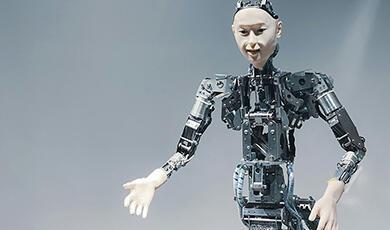18 March 2014
Cosmic Influences on Behaviour?
Professor Glenn D Wilson
Surveys show that around a quarter of people in Anglo-American countries believe in horoscopes. According to the U.S. National Science Foundation, this figure declined between 2000 and 2005 but is now rising again with “new age” thinking among young people. As many as 60% of 18-25 year-olds now believe there is some truth in astrology. At the same time, traditional religious beliefs and church attendance are rapidly declining. Horoscopes are read more by women than men and more by people high on the personality trait of neuroticism.
Many people look to their horoscopes for guidance in important life decisions and believe that their zodiac or “sun” sign is a clue to their personality and that of others. Terms like jovial, martial, mercurial, venereal and saturnine are implanted in our language as well as our psyche and we use them often without awareness of their origins.
This widespread belief in astrology is surprising given that it has no scientific rationale or validity. There is no correlation between sun-signs and personality or intelligence (Hartman et al, 2006). Astrologers are unable to match natal charts to personality test scores (Carlson, 1985) and groups of people with the same planetary alignment at the time of birth show no similarity of personality (Steyn, 2013).
Certain factors make it more likely that people will find their horoscope convincing. Those who know their sun sign and the personality traits supposedly associated with it find it more accurate (Fichten & Sunerton, 1983). Believers in astrology change their self-concept so as to be more consistent with astrological theory (Van Rooij, 1999). People are more likely to believe in astrology if their sign is associated with favourable traits (Hamilton, 2001). Sceptics given favourable horoscopes become more positive in their opinion of astrology (Glick et al, 1989).
Writers of horoscopes exploit the Barnum Effect (Furnham & Schofield, 1985). Named after American circus owner P.T. Barnum, who famously said “there’s one (sucker) born every minute”, this refers to the fact that many statements about personality ring true to nearly everyone. “You often come across as extravert and self-confident, while inside you feel uncertain”. “You are a creative person with a good sense of humour, though this is not always appreciated by others”. Statements like this, which are vague and flattering, can easily persuade people that a fortune-teller has special insight into their character.
One finding that engaged scientists for a while was that of the “Mars effect”. In the 1950s, a French psychologist called Michel Gauquelin claimed that eminent sports stars and military men were born disproportionately at times when Mars was rising above the horizon or had just past its culmination (Gauquelin, 1976). Similar relationships were reported for actors with respect to Jupiter (jovial) and scientists with Saturn (saturnine). These associations applied only to natural births, not those who were induced, and they excited astrologers as much as they puzzled scientists.
Detailed reanalysis of Gauquelin’s data by Dean (2002) revealed that these “planetary” effects could be accounted for by a combination of self-attribution and parental fiddling of birth details to fit favourable times, as gleaned from the widely-read almanacs of the day. The midnight (“witching hour”) was avoided and birth times tilted in an auspicious direction. On Christian Feast days, the full moon and lucky days of the month (1st, 3rd and 7th) more births were being recorded, while witches’ sabbats, new moon days and unlucky days (9th, 13th and last of the month) had fewer than expected births. It seemed that parents, in reporting birth times to the registry, had been tweaking them toward those which would presage greatness in a family career. Dean likened these social effects to the omission of a 13th floor, and Room number 13, in many hotels today. With declining superstition and declining use of Almanacs to organise one’s life, it became increasingly difficult to replicate Gauquelin’s findings (Kurtz et al, 1997) and interest in them has largely evaporated.
Research on the differences between people who believe in paranormal phenomena like astrology (“sheep”) and those who do not (“goats”) has identified certain personality characteristics. Sheep tend to be more Open to Experience and less Conscientious than goats, the reverse of the traits associated with traditional religious beliefs (Miklousic et al, 2012). Sheep are inclined to schizotypal and “new age” tendencies of various kinds, including use of recreational drugs (Swami et al, 2011). There are more women who are “sheep” and men who are “goats”.
Thalbourne (2009) describes paranormal beliefs as a form of “transliminality”, referring to weak boundaries between fantasy and reality and a propensity to the enjoyment of altered states of consciousness. Irwin et al (2012) show that such tendencies have much in common with the reasoning biases underlying the development of psychotic delusions. There may also be a link between anomalous experiences and complex partial seizures of the temporal lobes (especially the amygdala and hippocampus), leading Persinger (2001) to hypothesize that “sheep” are characterised by temporal lobe electro-sensitivity.
The term “lunacy” suggests that insanity is connected in some way with phases of the moon. Most commonly, the full moon is said to induce erratic tendencies that lead to increased rates of accident, crime, murder and suicide. The belief is common in the general population (43%) and is higher still among mental health professionals and emergency workers (Vance, 1995).
Scientific evidence for the “lunacy effect” is elusive. In a meta-analysis of 37 studies, involving psychiatric admissions, homicide, suicide, crime and crisis calls, Rotton & Kelly (1985) found no consistent effects. At best, effect sizes were only around 1%, too small to be casually observed. Similarly for suicides, Martin et al (1992) reviewed 20 studies and found no evidence for any relationship with the moon. Positive results have been intermittently reported since these reviews (e.g., Parmar et al, 2014) but the effects, when found, are very small.
Wolves are widely said to be more active at night but this too is not substantiated. In fact, the hunt less because their prey stays concealed (Sabato et al 2006), so their famous baying at the moon probably has more to do with mating than predation. One study at the Bradford Infirmary A & E Department reported that admissions for animal bites peaked at full moon (Bhattacharjee et al, 2000). This would suggest that animals, at least, are affected by the moon even if humans are not. Unfortunately, this finding was not replicated in Australia (Chapman & Morrell, 2000). It is not clear why.
Why are people so ready to believe in the power of the moon to influence us? One thing seems to be observation of the moon’s influence on our tides. Since humans are “80% water” people say, then the water in our brain must be similarly affected. Actually, the moon’s effect on our body water turns out to be miniscule and, anyway, the new moon has the same gravity as the full moon.
Throughout history there have been legends about werewolves and creatures that become lethal by moonlight. These have been perpetuated and burned into our psyche by numerous books and horror films. In the Europe of the Middle Ages nearly everybody believed in werewolves (it was actually an offence not to). The popularity of such legends has no doubt contributed to the idea that the full moon makes us mad, bad and dangerous.
Another reason for belief in the power of the moon is selective memory. When something bizarre occurs when there happens to be a full moon, it is imprinted in our memory. When an extraordinary event occurs at other times we take less notice of it. We seldom link an accident, murder or suicide to the absence of a full moon.
Moonlight has romantic connotations, perhaps because it provides an optimal balance between illumination and concealment for engaging in mischievous behaviours. It evokes a slightly mysterious feeling and smooths blemishes, making us more attractive to others. The fact that moon cycles last about a month, as does the human female sexual cycle is coincidental. Other primates have cycles of differing length. Nevertheless, some women’s cycles lock into moon phases, with menstruation beginning at full moon. This can regularise the cycle and may make a woman more fertile (Cutler et al, 1987). This connection had not been found in an earlier study (Law, 1986), so “moon trouble” could be more metaphor than fact.
It has been suggested that historically the full moon might have sparked erratic behaviour in vulnerable individuals (e.g., manic or epileptic episodes) because its bright light would have caused significant sleep loss. According to this theory, the effect is seldom found in modern studies because artificial light has obscured the differences between the moon phases (Raison et al, 1999).
This would not account for a Swiss finding that the full moon went with poorer sleep even in a light-sealed laboratory. Cajochen et al (2013) measured sleep depth and quality with EEG and melatonin secretion levels as well as by self-report. Their results could be evidence for an endogenous “circalunar clock”, similar to those responsible for the diurnal and seasonal rhythms. Alternatively, it is possible that subjects were aware of the moon phases from listings in their diary, even if they could not actually see them.
Lycanthropy is a clinical condition in which the individual believes they are changing into a wolf (or some other animal) at full moon, or they behave as though they are. Although sometimes thought to be extinct, cases still occur in modern times (Keck et al, 1988). It can be an empowerment fantasy, a form of multiple personality, or a psychotic delusion. A psychoanalytic interpretation is that it represents a projection of unacceptable sexual and aggressive impulses onto an animal (Garlipp et al, 2004). Or it may just be a convenient excuse for letting out the animal in oneself. One case was found to be associated with organic damage to proprioceptive brain areas (Moselhy, 1999). In any case, if a person believes the full moon transforms them, there is bound to be some degree of self-fulfilling prophecy.
That season of birth affects many aspects of human health is well established. Because energy demands in mothers are spread over such a long period, reproductive seasonality is not marked in humans - even less so in industrialised nations that control heat, light and food provision. Nevertheless, in most European countries there is a peak of conceptions in spring and another smaller one in autumn. This may be because conceptions are maximised when the temperature is around 12C in the morning (neither excessively hot nor cold). It may also be relevant that at these times day and night are roughly equal, as for our ancestral (tropical) origins.
According to studies in Denmark and Austria, the best time to be born (in the Northern Hemisphere) is the last quarter of the year (October to December), when one lives, on average, 216 days longer than the worst quarter (April to June). Similarly, in the U.S. those born in autumn live about 160 days longer than those born in spring (Foster & Roenneberg, 2008). People born in autumn are significantly more likely to live to be 100 than siblings born in spring (Gavrilov & Gavrilov, 2011).
Many different diseases and mental health problems have been linked with month of birth, reversals in the Southern Hemisphere proving the effect is seasonal, not astrological. For example, people who develop schizophrenia are more often born in winter (with an increased risk of about 10% compared with those born in summer). Note, this is a small difference and most people born in winter do not become schizophrenic. Many other medical conditions (including multiple sclerosis, autism, personality, alcoholism, eating disorder and seasonal-affective disorder) seem to be associated with spring birth (Foster & Roenneberg, 2008).
The reasons for these associations between season of birth and health are many. Rat studies have shown that the perinatal light-dark cycle has lasting (imprinted) effects on biological clocks that can affect lifetime behaviour (Ciarieglio, et al, 2011). Something similar with respect to the relationship between time of birth in humans and the “lark-owl” continuum has been reported (Wallace & Fisher, 2001).
Lack of sunlight, hence deficiency in vitamin D in the mother during pregnancy is a no doubt important. Multiple Sclerosis increases dramatically with latitude, an exception being Japan where the diet contains plenty of fish (an alternative source of vitamin D). Coastal Norway has less MS (and more fish) than Inland Norway and in Switzerland MS declines with altitude, where higher UV light promotes vitamin D3 synthesis.
Other forms of maternal stress may be important. For example, poor nutrition and infectious diseases like influenza are more prevalent in the winter, running up to a spring birth (Currie & Schwandt, 2013). The type of mother might also be important. Women of low socioeconomic status tend to give birth more in the spring months associated with poor outcomes. Winter births involve a disproportionate number of teenage and unmarried women (more unwanted pregnancies?), which could also affect developmental outcomes (Buckles & Hungerman, 2013). On a more prosaic note, summer-born children are disadvantaged academically because they are younger than their classmates (Bell & Daniels, 1990).
Marzullo (2014) reports that an excess of baseballers (especially the biggest hitters) are born in early November and a deficiency in early May. This would mean that for these “macho” men, the summer solstice would coincide with the 4th month of pregnancy (when sexual differentiation mainly occurs). Lesbian women were found to show the same pattern as baseballers and gay men the reverse. Marzullo suggests that these relationships are mediated by maternal melatonin being suppressed by mid-summer sunshine, thus releasing more foetal testosterone just as sexual dimorphism is being established (the reverse in mid-winter).
Solar activity, which follows an 11-year cycle, has been hypothesised to affect human health, through various avenues ranging from interference with brain functioning to epigenetics (Lucock et al, 2012). Anxiety, depression and suicide are most frequently implicated as influenced by solar flares and geomagnetic disturbances (Tada et al, 2014) although many other paranormal phenomena such as temporal lobe mini-seizures, bizarre dreams, sleep paralysis, hallucinations, hauntings and UFO sightings have also been cited (Conesca, 1997; Lipnicki, 2009; Saroka et al, 2014). Perhaps most extraordinary is Russian research claiming links with serial killing and terrorist suicide attacks (Grigoryev, et al, 2009). Much of this evidence is controversial and even inconsistent in terms of whether high or low geomagnetism is held to be responsible for the weird effects.
If they turn out to be real, such effects could be mediated by cryptochromes. These are primitive, blue-sensitive photoreceptors found in many plants, insects and animals with a variety of functions. In plants, they orient leaves toward the sun and in certain animals (e.g., birds and turtles) they contribute to the circadian clocks and sense magnetic fields that assist in navigation. Cryptochromes most likely influence behaviour via the pineal gland and melatonin, whereas disturbances to consciousness linked to unusual fluctuations of the Earth’s magnetic field could involve the hypothalamic/pituitary stress axis (Close, 2012).
When physicist Professor Brian Cox, in his 2010 BBC TV series Wonders of the Solar System, called astrology “a load of rubbish” there were protests from astrologers about lack of balance in opinions. Cox replied, “I apologise to the astrology community for not making myself clear. I should have said that this new age drivel is undermining the very fabric of our civilisation” (Jackson, 2011). In this he was echoing similar sentiments expressed by his predecessor Patrick Moore.
Does it really matter? Is not astrology just harmless fun that nobody takes seriously? It can on occasions be very important. At one time it may have influenced the most powerful man in the world - one with his finger on the nuclear button. According to Donald Regan, President Reagan’s Chief of Staff, “virtually every major move the Reagans (Nancy and Ronald) made during my time was cleared with a woman in San Francisco (Joan Quigley) who drew up horoscopes to make certain that the planets were in a favourable alignment for the enterprise”. Rather scary you might think.
References
Bell, J.F. & Daniels, S. (1990) Are summer-born children disadvantaged? The birthdate effect in education. Oxford Review of Education, 16, (online).
Bhattacharjee, C. et al (2000) Do animals bite more during a full moon? Retrospective observational analysis. British Medical Journal, 321, 1559-1561.
Buckles, K.S. & Hungerman, D.M. (2013) Season of birth and later outcomes: Old questions, new answers. The Review of Economics and Statistics, 95, 711-724.
Cajochen C. et al (2013) Evidence that the lunar cycle influences human sleep. Current Biology, 23, 1485-1488.
Carlson, S. (1985) A double-blind test of astrology. Nature, 318, 419-425.
Chapman, S. & Morrell, S. (2000) Barking mad? Another lunatic hypothesis bites the dust. British Medical Journal, 321, 1561-1563.
Ciarieglio, C.M. et al (2011) Perinatal photoperiod imprints the circadian clock. Nature Neuroscience, 14, 25-27.
Close, J. (2012) Are stress responses to geomagnetic storms mediated by the cryptochrome compass system? Proceedings of the Royal Society B: Biological Sciences, 279, 2081-2090.
Conesca, J. (1997) Isolated sleep paralysis, vivid dreams and geomagnetic influences: II. Perceptual and Motor Skills, 85, 579-584.
Currie, J. & Schwandt, H. (2013) Within-mother analysis of seasonal patterns in health at birth. Proceedings of the National Academy of Sciences (online).
Cutler, W.B. et al (1987) Lunar influences on the reproductive cycle in women. Human Biology, 59, 959-972.
Dean, G. (2002) Is the Mars Effect a social effect? Skeptical Inquirer, May/June, 33-38.
Fichten, C.S. & Sunerton, B. (1983) Popular horoscopes and the Barnum Effect. The Journal of Psychology: Interdisciplinary and Applied, 114, 124-134.
Foster, R.G. & Roenneberg, T. (2008) Human responses to the geophysical daily, annual and lunar cycles. Current Biology, 18, R784-R794 (online).
Furnham, A. & Schofield, S. Accepting personality test feedback: A review of the Barnum Effect. Current Psychology, 6, 162-178.
Garlipp, P. et al (2004) Acta Psychiatrica Scandinavica, 109, 19-22.
Gauquelin, M. (1976) Cosmic Influences on Human Behaviour, London: Futura.
Gavrilov, L. A. & Gavrilova, N.S. (2011) Season of birth and exceptional longevity: Comparative study of American centenarians, their siblings and spouses. Journal of Aging Research (online).
Glick, P. et al (1989) The fault is not in the stars: Susceptibility of sceptics and believers in astrology to the Barnum Effect. Personality and Social Psychology Bulletin, 1989, 15, 572-583.
Grigoryev, P. et al (2009) Heliogeophysical factors as possible triggers of suicide terrorist acts. Health, 1, 294-297.
Hamilton, M. Who believes in astrology? Effect of favourableness of astrologically derived personality descriptions on acceptance of astrology. Personality and Individual Differences, 31, 895-902.
Hartmann, P. et al (2006) The relationship between date of birth and individual differences in personality and general intelligence: A large-scale study. Personality and Individual Differences, 40, 1349-1362.
Irwin, H.J. et al (2012) Paranormal belief and biases in reasoning underlying the formation of delusions. Australian Journal of Parapsychology, 12, 7-21.
Jackson, T. (2011) When balance is bias. British Medical Journal, 344 (Editorial, online).
Keck, P.E. et al (1988) Lycanthropy: alive and well in the Twentieth Century. Psychological Medicine, 18, 113-120.
Kurtz, I. (1997) Is the “Mars Effect” genuine? Journal of Scientific Exploration, 11, 19-39.
Law, S.P. (1986) The regulation of menstrual cycle and its relationship to the moon. Acta Obstetrica et Gynecologia Scandinavica, 65, 45-48.
Lipnicki, D.M. (2009) An association between geomagnetic activity and dream bizarreness. Medical Hypotheses, 73, 115-117.
Lucock, M. et al (2012) Solar cycle predicts folate-sensitive neonatal genotypes at discrete phases of the first trimester of pregnancy: A novel folate-related human embryo loss hypothesis. Medical Hypotheses, 79, 210-215.
Martin, S.J. et al (1992) Suicide and lunar cycles: A critical review of 28 years. Psychological Reports, 71, 787-795.
Marzullo, G. (2014) Similar photoperiod-related birth seasonalities among professional baseball players and lesbian women with an opposite seasonality among gay men. Psychiatry Research (on line).
Miklousic, I. et al (2012) Paranormal beliefs and personality traits in Croatia. Journal of General Social Issues, 1, 181-201.
Moselhy, H.F. (1999) Lycanthropy: new evidence of its origin. Psychopathology, 32, 173-176.
Parmar, V.S. et al (2014) Effects of the full moon on psychiatric emergency department presentations. ISRN Emergency Medicine (Online).
Persinger, M.A. (2001) The neuropsychiatry of paranormal experiences. Journal of Neuropsychiatry and Clinical Neuroscience, 13 (online).
Raison, C.L. et al (1999) The moon and madness reconsidered. Journal of Affective Disorders, 53, 99-106.
Rotton, J. & Kelly, M.W. (1985) Much ado about the full moon: A meta-analysis of lunar-lunacy research. Psychological Bulletin, 97, 286-306.
Sabato, M.A. et al (2006) A note on the effect of the full moon on the activity of wild-maned wolves. Behavioural Processes, 73, 228-230.
Saroka, K.S. et al (2014) Greater electroencephalic coherence between left and right temporal lobe structures during increased geomagnetic activity. Neuroscience Newsletters, 560, 126-130.
Steyn, R. (2013) Astrological planetary alignment and personality differences: Saving us from ignorance. International Journal of Science in Society, 4, 117-122.
Swami, V. et al (2011) Alien psychology: Associations between extraterrestrial beliefs and paranormal ideation, superstitious beliefs, schizotypy and the Big Five personality factors. Applied Cognitive Psychology, 25, 647-653.
Tada, H. et al (2014) Association of geomagnetic disturbances and suicides in Japan, 1999-2010. Environmental Health and Preventative Medicine, 9, 64-71.
Thalbourne, M.A. (2009) Transliminality, anomalous belief and experience, and hypnotisability. Australian Journal of Clinical and Experimental Hypnosis, 37, 119-130.
Vance, D.E. (1995) Belief in lunar effects on human behaviour. Psychological Reports, 76, 32-34.
Van Rooij, J.J. (1999) Self-concept in terms of astrological sun-sign. Psychological Reports, 84, 541-546.
Wallace, B. & Fisher, L.E. (2001) Day persons, night persons and time of birth: Preliminary findings. Journal of Social Psychology, 141, (online).
© Professor Glenn D Wilson, 2014


 Login
Login







